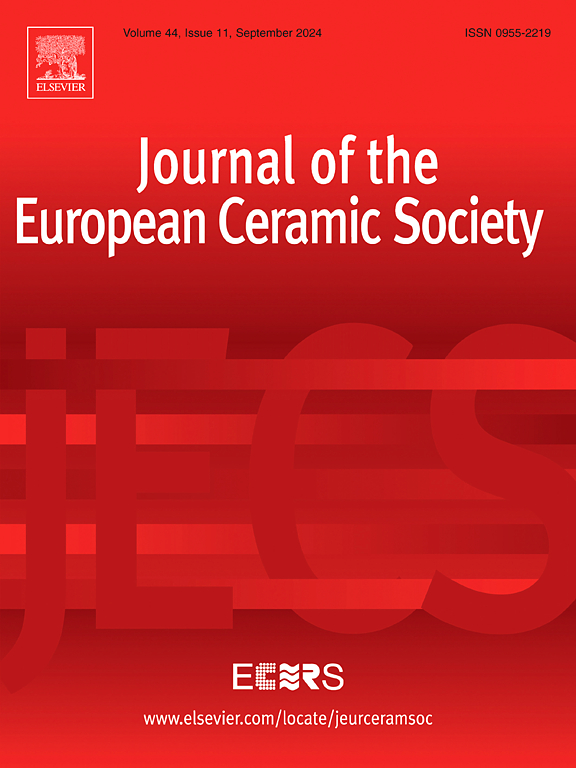Characterization of stiff porous TiC fabricated by in-situ reaction of Ti with carbon derived from phenolic resin containing template
IF 5.8
2区 材料科学
Q1 MATERIALS SCIENCE, CERAMICS
Journal of The European Ceramic Society
Pub Date : 2025-01-27
DOI:10.1016/j.jeurceramsoc.2025.117241
引用次数: 0
Abstract
Porous TiC is a representative of porous ceramic showing poor mechanical properties owing to high fabricate temperature. It has attracted increasing attention to fabricate porous TiC with high mechanical strength and 3D porous structure. Here, we introduce an effective way for fabricating porous TiC via template method in which phenolic resin derived carbon reacts with Ti powders to form TiC. Since the porosity and pore structure play important roles in mechanical performance, in this work the porosity of TiC was controlled by template content of NaCl. For investing the formation process of TiC, green body of phenolic resin-Ti was carried out on TG-DSC and DRIFTS. It was revealed that the formation of TiC occurred in two stages, each governed by phenolic resin carbonization, and TiC was formed above 700 ℃. The as-prepared porous TiC possessed unique 3D porous structure and excellent mechanical performance. With the increase of NaCl content, the porosity of TiC increased, but the pore size distribution became narrower. By taking advantage of pore structure, porous TiC showed high compressive strength. Compressive strength together with bulk density gradually decreased with the porosity increase. When the porosity increased from 30.1 % to 55.1 %, the compressive strength decreased from 177.2 MPa to 58.7 MPa. Moreover, the 3D architecture render TiC excellent thermal insulation performance, as the porosity was decreased, the thermal conductivity of porous TiC decreases from 3.5 W/m.K to 1.9 W/m.K.
求助全文
约1分钟内获得全文
求助全文
来源期刊

Journal of The European Ceramic Society
工程技术-材料科学:硅酸盐
CiteScore
10.70
自引率
12.30%
发文量
863
审稿时长
35 days
期刊介绍:
The Journal of the European Ceramic Society publishes the results of original research and reviews relating to ceramic materials. Papers of either an experimental or theoretical character will be welcomed on a fully international basis. The emphasis is on novel generic science concerning the relationships between processing, microstructure and properties of polycrystalline ceramics consolidated at high temperature. Papers may relate to any of the conventional categories of ceramic: structural, functional, traditional or composite. The central objective is to sustain a high standard of research quality by means of appropriate reviewing procedures.
 求助内容:
求助内容: 应助结果提醒方式:
应助结果提醒方式:


